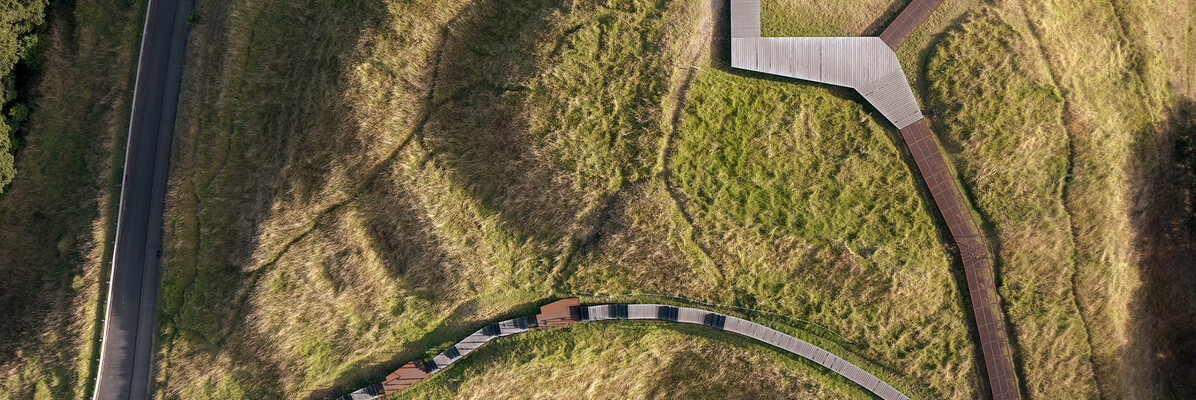
Oral History
Eighteen oral history interviews have been recorded with landscape architects and other individuals who have been influential in the founding and development of the landscape architecture profession in New Zealand.
The oral history collection was initiated in 2006 when Boffa Miskell Limited commissioned six interviews with founding members of the Institute. Twelve more were recorded between 2009 and 2013, with funding from NZILA, the New Zealand Lottery Grants Board and a New Zealand Oral History Award. It is likely that further interviews will be recorded as funding allows, to add further perspectives to the collection.
Copies of all the interviews are held in the NZILA archives and at the Alexander Turnbull Library in Wellington. They are not available online. If you wish to listen to any of them through the Alexander Turnbull Library, you will need to place a request to listen at the library or via interloan if your local library supports interloans. To identify an interview and make a request use the search tool at https://tiaki.natlib.govt.nz/#home. Use the ‘key words’ panel and select ‘Interview/event’ in the ‘level’ box. However, some interviews that have yet to be catalogued will not show up so, in addition, select the ‘Ask a librarian’ tab (bottom right of the tiaki page.) Alternatively, contact NZILA. Note: the interviews are subject to varying interviewee conditions of access and use and are subject to copyright. The Institute or Library can advise you.
The interviewees
- Neil Aitken
- Earl Bennett
- Frank Boffa (play audio)
- Charlie Challenger (play audio)
- Barry Chalmers
- Hedley Evans
- Robin Gay (play audio)
- Tony Jackman
- Ross Jackson
- Di Lucas
- George Malcolm
- Diane Menzies
- Alan Morgan
- Herwi Scheltus
- Allan Rackham
- Alan Titchener
- Alex Wilson
- Jan Woodhouse
Thanks to the interviewees for their time, recollections and reflections.
Objective
The objective of the oral history collection is to gather a representative range of perspectives and experiences relating to the practice of landscape architecture in New Zealand - as told through personal stories.
The interviewees were selected for their roles in founding, leading and developing the profession in New Zealand. Collectively, they include individuals who were the first teachers and practitioners, who set up and served on the NZILA, who lobbied for protection of landscape values, who developed new methodologies and techniques, and who represented the profession overseas.
Opportunities in the
1970s and 1980s
During the 1970s and 1980s, most of the new graduates found employment in the public service - Ministry of Works, the departments of Lands and Survey, Electricity, Forestry, the Housing Corporation and in local government. These jobs provided a reasonably secure work environment to get started and the opportunity to demonstrate what landscape architects could offer.
In the private sector, Frank Boffa was one of the few who was brave enough to set up on their own in the early days, founding the one-man practice that became Boffa Miskell Limited.
The 'Think Big' projects of the Muldoon era provided an important opportunity to demonstrate that landscape architects could handle big projects and be influential in reducing environmental impacts.
1990s and coming of age
By the time of Rogernomics, the profession was well enough established for most practitioners to adapt to the massive government restructurings and cut-backs of the late 1980s. From then on, the balance shifted towards private practice, greatly aided by the advent of the Resource Management Act. The Institute had lobbied hard to have the word 'landscape' included in the Act and that led to unprecedented amounts of work and prominence in the following decades.
Collectively, the interviews touch on many aspects of change in New Zealand. The numerous themes covered include:
- difficulty in communicating landscape architecture and landscape values to others;
- collegiality of the early days;
- competition that came with more private practice and Environment Court work;
- milestone projects and increasing work in urban design and community development;
- the Institute's development, paralleling the profession's growth;
- prominent representation in affairs of the International Federation of Landscape Architects;
- questions about how to weave a bicultural approach into the practice of landscape architecture in New Zealand;
- the desire to interpret and express New Zealand's unique qualities and sense of identity in landscape work
Ultimately, it is a 'coming of age' success story, as the late Robin Gay reflects. Play audio
Copyright
Any re-use of these audio clips is a breach of copyright. Copyright is held variously by Boffa Miskell Limited and the New Zealand Institute of Landscape Architects Tuia Pito Ora (NZILA). For copyright enquiries, contact NZILA.